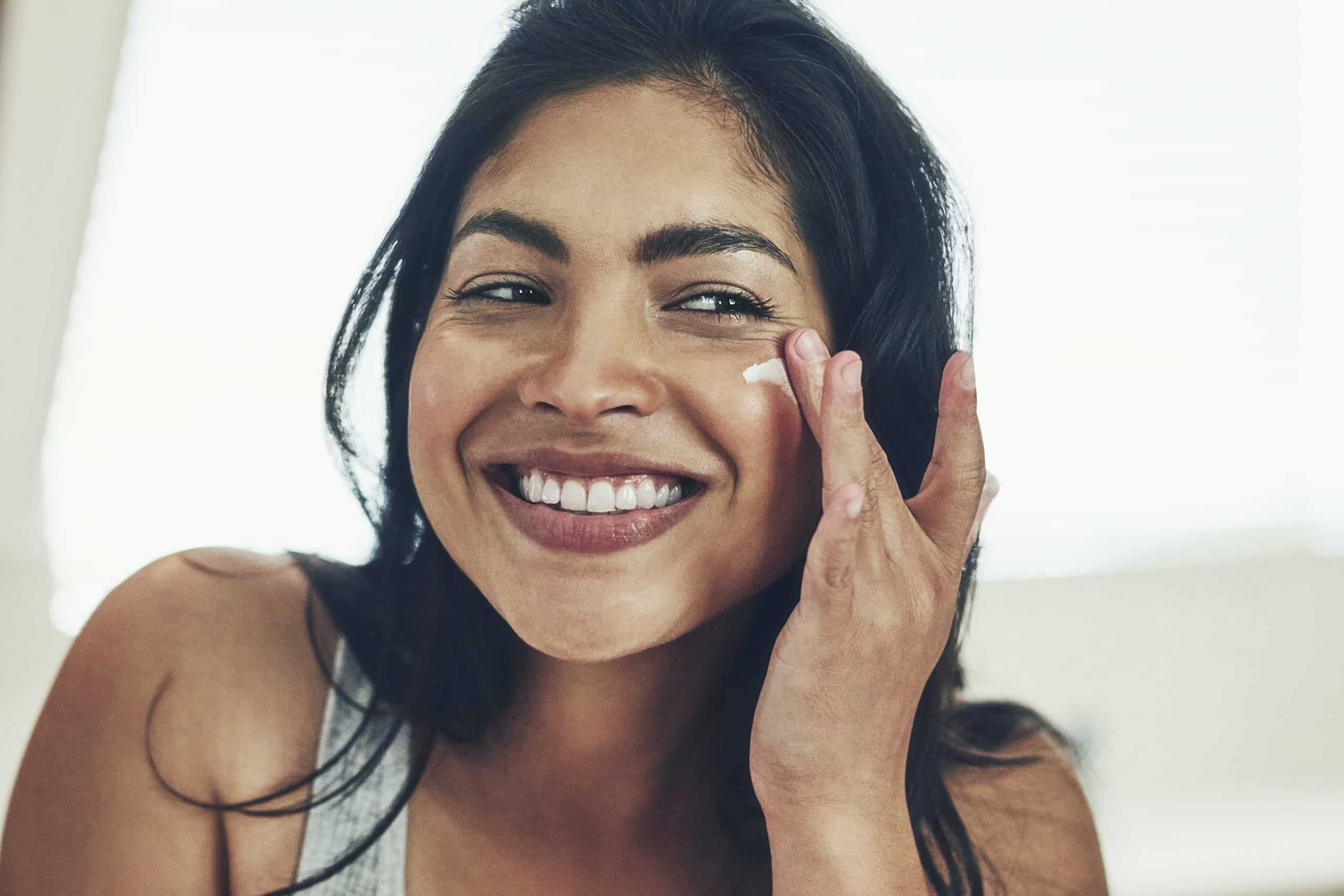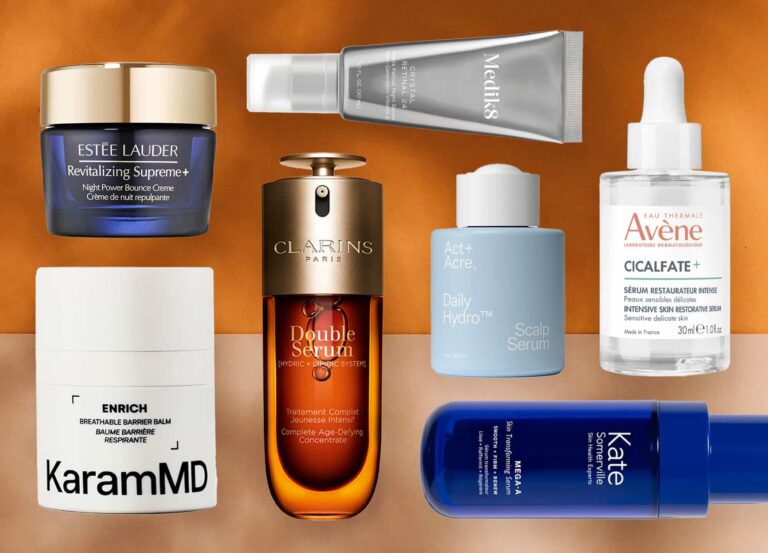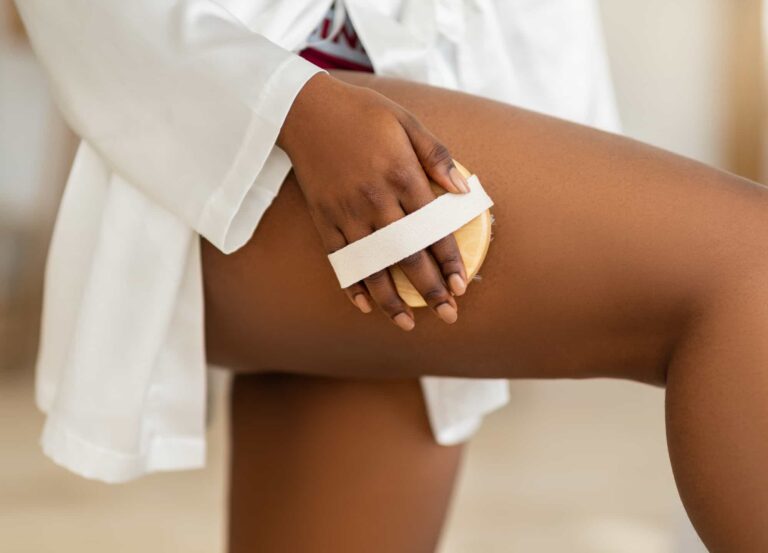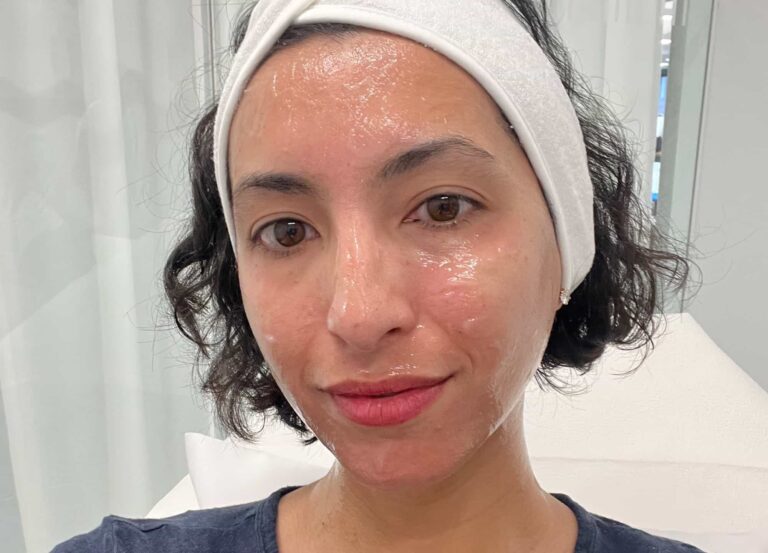It doesn’t matter if you’re well out of your teen years or part of a celebrity clan. Acne, especially of the cystic variety, doesn’t discriminate when it comes to age, gender, or level of fame. Even celebrities like Kendall Jenner and Lili Reinhart have openly talked about their troubles with cystic acne. Those deep, painful, long-lasting bumps show no mercy.
If you’ve ever experienced a cystic breakout, you know that it’s an entirely different kind of beast compared to milder types of pimples. They can take up large patches of unwelcome residence on your complexion, sometimes taking weeks or even months to disappear. You might find yourself making a plea to the acne gods, wishing instead for a smattering of whiteheads in exchange for your aching cystic pimples.
Thankfully, there are some things you can try, including some skin-care products that have cystic acne—fighting ingredients. Find out how to conquer cystic acne once and for all, with help from skin-care experts.
What is cystic acne?
When we think of cystic acne, what usually comes to mind are the painful pimples that stay deep underneath the skin, never coming to a head. However, there are technically two types that fall underneath the nodulocystic (a severe form of acne) umbrella: cystic acne and nodular acne.
“Cystic acne is considered to be the most severe type of acne, in which the pores in the skin become blocked, leading to infection and inflammation,” Dr. Michele Green, a board-certified dermatologist in New York City, explains. “Nodular acne [occurs] when many red, swollen, tender lumps form in the skin. These can be the size of pencil erasers or larger. The skin condition mainly affects the face, but it also often affects the upper trunk, chest, and shoulders.” Nodular acne feels hard to the touch, doesn’t form a whitehead, and can be flesh-toned, while cystic acne is filled with pus and softer than nodules. Dr. Green says that if left untreated, nodulocystic acne can lead to permanent scars.
What causes cystic acne?
Dr. Shari Sperling, a board-certified dermatologist in Florham Park, New Jersey, says that hormones, bacteria, and genetics can all have an effect on cystic acne. Dr. Green adds that a family history of cystic acne is one of the contributing factors to the development of the condition. “Acne, particularly cystic acne, tends to run in families, and individuals are more likely to develop it if one or both parents had it,” she explains. “An individual’s genetic makeup or certain genetic mutations may also increase their risk of developing cystic acne. For example, an individual’s genetic makeup may cause an overproduction of skin cells or sebum. This increases the likelihood of clogged pores or oily skin, which are both contributing factors to the development of acne.”
People who have oily skin tend to be more at-risk for cystic acne. “It develops when cysts form deep underneath your skin. This can result from a combination of bacteria, oil, and dry skin cells that get trapped in your pores,” Dr. Green says.
There is also research that suggests diet may play a part in cystic acne, particularly when it comes to dairy. Several studies have shown a possible association between dairy and acne, with some specifically noting a link to skim milk as the culprit. Diets containing high-glycemic foods, like white bread, white rice, corn, and white potatoes, may also contribute. The American Academy of Dermatology (AAD) published research that showed 87% of patients saying they had fewer acne bumps after switching to a low-glycemic diet.
Prescribed treatments for cystic acne
There are various treatments that a dermatologist can prescribe for treating severe, cystic acne. Dr. Green says tretinoin, which is a derived form of vitamin A and available only through a prescription, is known for fighting acne and clogged pores.“Tretinoin also works to reduce unwanted pigmentation and improves your overall skin texture. Your doctor will determine if this treatment option is best suited for your skin,” she says. There’s also clindamycin, a topical antibiotic that battles cystic acne by stopping the acne-causing bacteria that causes inflamed skin. It’s usually prescribed with other acne medication, like tretinoin.
“In addition, oral antibiotics such as tetracycline or minocycline are highly effective at treating cystic acne,” Dr. Green says, adding that when you have stubborn cystic acne that doesn’t respond to these oral antibiotics, Accutane, which is a derivative of vitamin A, is an option.
Related: Differin vs. Retin-A: What’s The Difference?
The best skin-care ingredients for treating cystic acne
Niacinamide
According to Dr. Green, niacinamide, a powerful antioxidant derived from vitamin B3, can be effective for acne-prone skin. “This ingredient fights acne by reducing inflammation and dark spots,” she says. A study from 2006 has also shown niacinamide to inhibit sebum production. Try using a product like The Inkey List Niacinamide Oil Control Serum.
Azelaic acid
Dr. Green says azelaic acid works to unclog pores, lightens dark spots, soothes inflammation and reduces redness in your skin—it’s the perfect weapon for fighting dreaded cystic acne. Test out a product like The Ordinary Azelaic Acid Suspension, which can even out skin texture while fighting acne at the same time.
Adapalene
While Dr. Sperling says cystic acne patients usually need a more aggressive treatment, she says a product like Differin Gel can help. Differin contains adapalene, a topical retinoid, which targets acne deep beneath the skin’s surface while improving texture.
Retinol
Retinol, with its high-cell-turnover powers, is ideal for treating acne-prone skin as well as improving the appearance of scars caused by severe acne. Using a product like SkinCeuticals Retinol 0.3 during the evening is a good place to start—or incorporate Dr. Dennis Gross Alpha Beta Extra Strength Daily Peels into your routine: the two-part regimen teams retinol with seven different acids to purify pores and even out texture.
Related: 9 Retinols That Rival Their Rx Counterparts
Bamboo extract
If you’re looking to go the natural-ingredient route, bamboo extract might be the way. Packed with antioxidants to protect against oxidative stress, it’s also known to strengthen the skin’s moisture barrier, which is key when dealing with acne. Try Dr. Oracle A-Thera Toner, to calm inflamed skin.
Tea tree oil
Tea tree is a superb all-natural ingredient for skin, especially when when dealing with cystic acne issues; it is both antibacterial and anti-inflammatory. Some people use it as a spot treatment, or incorporate a tea tree oil cleanser (like InstaNatural Acne Cleanser, which combines salicylic acid and tea tree oil for a cystic acne-busting combo) into their routines.
Benzoyl peroxide
Benzoyl peroxide is probably the one ingredient you’ve constantly heard about since you dealt with pimples as a teenager, and for good reason. This classic acne-fighting ingredient decreases bacteria that causes those breakouts, including cystic acne bumps. Try La Roche-Posay Effaclar Duo Dual Acne Treatment, which contains the powerful duo of micronized benzoyl peroxide and lipo hydroxy acid to specifically treat the acne that lies deep underneath the skin.
Salicylic acid (BHA)
Salicylic acid is a beta hydroxy acid (BHA) that penetrates deep into the pores. It also has anti-inflammatory properties, making it great for cystic acne–prone skin. You can add a salicylic acid cleanser, like SkinCeuticals LHA Cleanser Gel or Neutrogena Oil-Free Salicylic Acid Acne Fighting Face Wash, to your routine. For a spot treatment, try Jafra Clear Blemish Treatment.
Glycolic acid and lactic acid (AHAs)
While BHAs are better for cystic acne than their counterparts, alpha hydroxy acids (AHAs), they can be used in conjunction with each other to elevate cystic acne treatment. While BHAs unclog pores and attack cystic acne, AHAs can help smooth skin texture and brighten acne scars. Though lactic acid is not commonly thought to treat cystic acne, people who suffer from it (like Reinhart) swear by Renee Rouleau Anti Bump Treatment (formerly called Anti Cyst Treatment), which contains the ingredient. Perhaps it has something to do with the combination of anti-inflammatory methyl gluceth-20 and exfoliating citric acid.
Willow bark extract
Willow bark contains salicin, which is where salicylic acid is derived from, and it can help decrease redness and inflammation. Try Eminence Organic Skin Care Clear Skin Willow Bark Booster-Serum or Odacité Mint + Green Tea Hydra-Purifying Treatment Mist, both of which contain this calming extract.
Zinc
Zinc is anti-inflammatory and may help reduce sebum production while fighting bacteria that cause acne. You’ll mainly find zinc as a boost in products with other acne-fighting ingredients, such as in Bare Minerals Blemish Remedy, which contains salicylic acid as well as zinc.
Hydrocortisone
Hydrocortisone can calm inflamed skin, and something like Cortizone-10 can be used as a spot treatment. It can be used in combination with other acne-fighting ingredients, including salicylic acid and benzoyl peroxide, to fight cystic acne.
Sulfur
Sulfur is a powerful ingredient that fights bacteria and impurities. Try adding a sulfur-based mask, like Peter Thomas Roth Therapeutic Sulfur Masque or Sunday Riley Saturn Sulfur Acne Treatment Mask, to your regular routine. For a spot treatment, try Kate Somerville EradiKate.
Charcoal
Charcoal isn’t just for BBQ—this ingredient can help clear skin by unblocking pores and reducing breakouts. Try Boscia Charcoal Exfoliating Peel Gel, which contains charcoal and glycolic acid to clear skin and remove dead skin cells.











